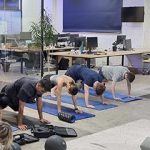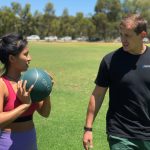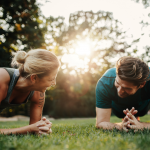Destructive Habits
All human beings generally have a set of habits and routines that they adhere to and engage in on a daily basis. These habits might be getting up at the same time every night to go to the toilet or arranging your packed lunch a certain way in the morning. Many habits and routines are essential to our survival in the modern world, where would we be without observing the habit of looking both ways before crossing a busy street or going through the routine of brushing and flossing to keep dental hygiene strong. Some habits/routines can even be productive and highly beneficial, think of your workout routine or your habit of always keeping a bottle of water in the car to avoid dehydration. Other habits and routines can be destructive and counter productive, we often see this emerge in addictive and self-destructive behaviour. In today’s blog we are going to look at 3 of the most destructive health/fitness habits as well as identify what we can do to give ourselves the best chance of avoiding falling into these habits.
Engaging in high intensity exercises without the structural integrity or bio-mechanics to support and absorb the force and impact on the body.
Think of playing a game of footy or netball after a long period away from the game. You find it difficult to accelerate or decelerate with any control, you feel your legs and back muscles fatiguing quickly. Furthermore, you find your decision making and quickness limited due to resources and energy being used just to keep you upright and moving, albeit slowly! Your gait cycle and ability to jump, turn and execute skills are all well below the level of performance you know you are capable of. By the end of the first quarter you feel like you have played a full game. This is due to the connective tissue muscles joints and ligaments being deconditioned and not used to the forces and angles of movement. Your cardiovascular system is also struggling to provide your blood with enough oxygen to keep cells producing energy which fatigues you extremely quickly. Finally if your structure lacks alignment and what is known as ‘tensegrity’ you will find you suffer from increasing overuse and chronic ailments as well as impact injuries as the body’s efforts to compensate poor movement patterns come back to haunt you.
Neglecting the rest and recovery aspect of training when in the process of trying to get fitter and healthier.
We have all heard the phrase no pain no gain. In recent times this has finally started to be questioned by health and fitness professionals however a vast majority of the industry still follows this outdated method. Think of it this way, when training and engaging in producing force through movement against gravity and the ground the body’s structure of bones, fascia, muscles, ligaments and tendons are all damaged and broken down by the efforts required of them. The body’s systems recognize this and repair and build the affected areas back again, this time however they build them a little stronger and a little better. This is the body’s way of managing the stress you are putting on it when you workout. The adaptions the body makes ensure you get better and more competent at whatever you practice doing. By not allowing the body adequate time to recover and rebuild you simply spin the wheels of progress by placing more stress on already poorly adapted and damaged tissues bones and joints. Over time the body will place more and more restrictions on your movement as it tries to avoid injury. This can leave us wondering why our performances and feeling of strength balance and fitness seem to be regressing rather than progressing no matter how much extra work is being put in. The secret may be less rather than more.
Falling into the easy trap of thinking about and concentrating on movement and physicality in a purely sports or workout related context.
Personal trainers and their clients are getting better and better at understanding and applying structurally strong and properly integrated movement patterns inside the dedicated training space whether at the gym or home. However once that client has left the the watchful eye of their trainer how do they physically navigate the reality we live in with confidence and surety? Do they understand and apply the same principles of smooth reciprocal movements to their everyday movement? If we dive deeper into this we can see that the same principles that apply to moving during a workout hold even more relevance when moving in other scenarios. When walking the spine should be in a mostly neutral position with the hip and shoulder posterior oblique system (POS)/anterior oblique system (AOS) sling connections doing the bulk of the work. When sitting at a desk or in the car the glutes should be active and the transverse abdominis (TVA) engaged to prevent the lumbar spine muscles and upper abdominals doing the work to hold our upper body upright. For both males and females, it is essential the pelvic floor is working proactively to keep the hips centred and remove excess pressure on the lumbo-pelvic complex. When immobile or mobile the neck should be in a neutral position not protracted forwards supported by strong thoracic spine muscle engagement. This can only come about by deep uninhibited breathing into the diaphragm combined with sufficient elasticity in the tissue and muscles of the chest and back to allow full ROM in all joints. As we can see the same cues that apply to smooth strong effortless movement in a workout context are just as applicable to moving around in any other capacity. Connection between myofascial slings and properly tensioned muscles and tendons is essential to avoiding placing excessive repetitive strain on the wrong areas causing pain and dysfunction. It pays to gain an understanding of anatomy and physiology and the impact of not concentrating on your daily movement patterns. On the positive side if you do start to identify then address little issues and problems you will see exciting improvements in your athletic potential as well as remove pain and timidity from your movement in general.
Conclusion
We hope you have found some value from this blog in terms of identifying bad exercise habits as well as getting some ideas on how to avoid falling into them. Remember to always be trying to refine and improve even the smallest movements you make in order to live a pain free physically enjoyable life!






